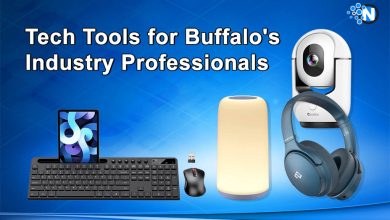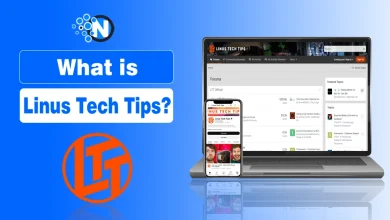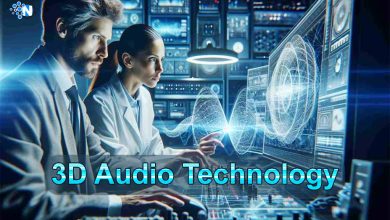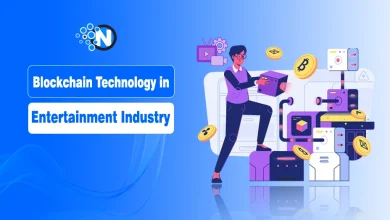How to Keep Learners Engaged with Microlearning Tools and Techniques
Microlearning is the modern approach to training and development. This delivers small, bite-sized learning modules. Unlike the long traditional training sessions, microlearning breaks complex topics into easily digestible chunks.
This method is particularly useful for keeping learners engaged, as it caters to shorter attention spans and allows for more flexible learning schedules.
In this blog post, I have mentioned some of the best strategies and tools to help you keep learners engaged with microlearning.

Mobile Learning Solutions
To implement a successful microlearning strategy, organizations can leverage various microlearning solutions. These solutions often include:
Learning Management Systems (LMS)
Today, powerful LMSs can especially be used to deliver microlearning modules through content organization and distribution, tracking learner progress, and analytics. LMSs also offer personalized learning experiences based on individual needs and preferences. Integration with the existing training program is guaranteed when using microlearning modules in an LMS.
Authoring Tools
The authoring tool helps the organizations develop personalized microlearning content based on the particular requirements and objectives. Authoring tools allow developing easy, interactive modules that could involve videos, quizzes, simulations, or infographics. Authoring tools will enable an organization to produce a range of microlearning content that reflects their brand and culture but will be highly engaging and effective.
Mobile Learning Apps
Mobile learning apps have become the way of the future for delivering microlearning content in this mobile-first world. Mobile apps enable learners to access microlearning modules anytime, anywhere on their smartphones and tablets. This provides an easy and flexible means of learning, which can fit learning into busy schedules.
Microlearning Best Practices
1. Know Your Audience
Knowing your learners is the foundation of good microlearning. Knowing the preferred learning style will give you an idea of how the content will be presented to them to make maximum impact. Infographics and videos work well for visual learners, whereas audio files can cater more to your auditory learners.
A kinesthetic learner would require hands-on activities or role-playing. You may use data or analytics in such a way that learners can receive personally tailored recommendations based on their learners’ progress or preferences. This is a personalized approach, not only increasing engagement but also enhancing knowledge retention.

2. Keep It Short and Sweet
The concept of microlearning is the brevity of content. You will capture the attention of learners by delivering content in short, focused bursts, preventing them from being overwhelmed by a lot of information. Try for modules that are 5 to 10 minutes long so learners don’t feel overwhelmed.
Clearly stating the learning objectives at the start of each module keeps students focused and helps them understand the value that goes into the content. Keep the content concise and relevant enough and avoid unnecessary distractions, thus keeping your microlearning impact at its maximum level.
3. Keep It Interactive
To keep learners engaged, making the microlearning content interactive becomes quite important. Quizzes, polls, and simulations can be incorporated to keep learners actively engaged in the learning process. They test their knowledge and apply what they have learned.
Gamification elements like points, badges, and leaderboards motivate learners and bring a competitive feel into the learning process. The presentation of concepts in real-world scenarios makes the learning experience more practical and relevant. This connects the dots in the learner’s mind and applies knowledge to real life.
4. Make It Attractive
The more attractive the learning experience is, the better it is likely to engage the learners. You can break up text-based content with high-quality images, infographics, and videos to add more flavor to your learning.
The clear and concise design also enables learners to go through the content easily and, that way, focus on key information. Using a constant visual style for all microlearning modules ensures the consolidation of your brand and the unification of your learning process.
5. Mobile Learning
With the digital age, mobile learning has become one of the most important needs. Your microlearning modules should, therefore, be optimized for responsive design to cater to the needs of your mobile learners. The content will then be accessible and easy to consume on all devices, from smartphones to tablets.
Additionally, push notifications can also remind learners of upcoming modules or deliver bite-sized learning nuggets directly to their devices. For students who may not have reliable web access, the ability to access modules offline is another useful feature.
6. Community of Learners
This sense of community among learners contributes to high levels of engagement and knowledge retention. The social learning possibilities can be created through forums, social media tools, and collaborative tools that allow discussion and sharing within the peer environment to stimulate learning within the group through peer discussions or collaborative works.
Moreover, these experienced learners can be paired with new learners through mentorship programs providing guidance, help, and priceless insights.
Benefits of Microlearning for Learners and Organizations
Increased Engagement from Learners
Because microlearning is not lengthy and interactive, more learners remain focused and on task. This form breaks down complicated topics into more biteable pieces of information, leaving learners unburdened by large amounts of the same material and raising learner engagement.
Improved Retention
Since microlearning is comprised of content in small, well-focused modules, learners can process the information better and retain it for a longer period. This is especially helpful in topics that should frequently be updated or that would require refresher training.
Increased Productivity
Microlearning enables learners to learn fast and effective. As the learner achieves specific learning objectives, they apply the newly gained knowledge to the work. This will be a cause of increased productivity and enhanced performance.
Flexible Learning
In microlearning, flexibility cannot be rivaled. Learners access microlearning modules at any moment, anywhere, on whichever device they like. Through this flexibility, learners may fit learning into their busy schedules or maintain and update their skill sets.
Cost-Effective
Microlearning can be cost-effective for organizations. With reduced training time and resources, an organization can save much. Moreover, microlearning can be scaled up to accommodate a growing workforce, thus a sustainable and cost-effective approach to training and development.
Conclusion
By implementing these strategies, you will be able to create meaningful and effective microlearning experiences that empower learners to acquire new knowledge and skills efficiently. Thus, the key to proper microlearning is focusing attention on the needs and preferences of the learner while delivering an informative yet enjoyable content for them.




